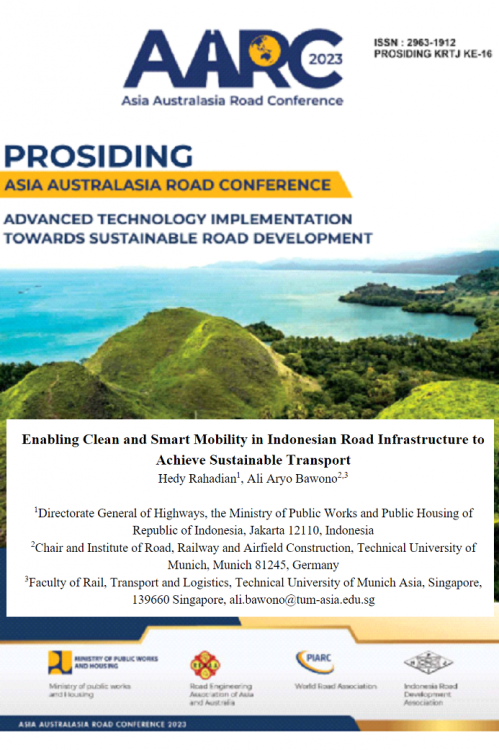Kami menggunakan cookies untuk membuat pengalaman Anda lebih baik. Untuk mematuhi petunjuk e-Pribadi yang baru, kami perlu meminta persetujuan Anda untuk menyetel cookies. Pelajari lebih lanjut .
Enabling Clean and Smart Mobility in Indonesian Road Infrastructure to Achieve Sustainable Transport
Sustainable transport infrastructure is one of the key aspects to battle climate change. Oil dependence contributes to climate change, and the transport and logistics sector is responsible for 25% of energy-related CO2 emissions. Furthermore, 75% of transport emissions come from road (passenger and freight) vehicles. Even further, major challenges in transport, such as social inclusion, gender equality, and capacity building, are identified.
Mobility and road transport infrastructure are critical to achieving sustainable cities and are embedded in Sustainable Development Goal (SDG) 11. Electromobility and autonomous smart mobility are presently considered by various stakeholders to be of strategic importance.
The objective of this study is to evaluate the key enablers in road infrastructure to embrace electromobility and smart mobility. Key enablers include five aspects, namely policy and strategy, technical, financing, R&D, and capacity building. Those aspects are further investigated based on components including the transport modes (low-emissions-EVs and autonomous vehicles-AVs), infrastructure, power, connectivity, and control and centralization management.
Key enablers are then derived into key strategies, including (1) green and reliable infrastructure, (2) adaptive and innovative infrastructure, (3) green[1]powered infrastructure, (4) humane-centric infrastructure, and (5) smart and connected infrastructure. This will include but is not limited to innovative dynamic charging with wireless power transfer infrastructure, charging infrastructure, connectivity, i.e., V2I (Vehicle to Infrastructure), and energy harvesting infrastructure. Prioritization can be considered to firstly optimize road infrastructure for electromobility and then secondly for autonomous vehicles.

